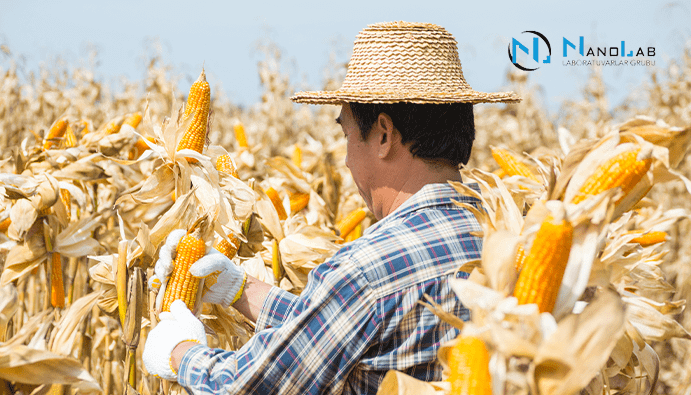Determination of Deoxynivalenol (DON): Mycotoxin Analysis
What is Deoxivenol? What are the Health Hazards?

Deoxynivalenol (DON) is a mycotoxin, commonly known as vomitoxin, and is a contaminant commonly found in cereal products. DON is a metabolic by-product of Fusarium molds and has adverse effects on human and animal health. It is especially found in grains such as corn, wheat, barley and oats and can be transferred to processed foods made from these products.
What is Deoxynivalenol?
DON is one of the most frequently detected trichothecene group mycotoxins in food products. It has high toxicity and consumption of contaminated grains can lead to serious health problems.
- Chemical Structure: DON is a mycotoxin belonging to the trichothecene class. It is a structurally stable molecule and is resistant to heat and processing.
- Affected Crops:
- Corn, wheat, barley, oats.
- Cereal-based processed foods such as bread, pasta, breakfast cereals.
- Animal feed
Health Effects of DON
DON can have various toxic effects on humans and animals:
a) Acute Toxicity
- Vomiting, diarrhea and stomach upsets.
- Hence the name “vomitoxin”.
b) Chronic Toxicity
- Suppression of the immune system.
- Growth retardation and nutritional disorders.
c) Genetic and Cellular Effects
- Suppresses cellular protein synthesis, leading to growth and development problems.
- Long-term exposure may predispose to cancer.
d) Effects on Animal Health
- Reduced feed intake, lower milk and meat yields.
- Pigs are particularly susceptible to DON.
Areas where DON is found in foods and feeds
DON contamination can occur at any stage, from growing to storage of agricultural products:
- Cereals: DON is caused by Fusarium molds that thrive in high humidity conditions, especially pre- or post-harvest.
- Grain-based Processed Foods: DON cannot be completely destroyed during milling, cooking or fermenting of grains.
- Animal Feed: DON in feed directly affects animal health and the toxin can pass into dairy and meat products.
What are the Legal Limits for DON?
The amount of DON is limited by national and international authorities:
- European Union:
- Maximum 750 µg/kg in foods (wheat-based products).
- Maximum 200 µg/kg in children's food.
- Turkey:
- The Turkish Food Codex applies limits in line with EU standards.
- USA:
- FDA tolerates up to 1,000 µg/kg in animal feed and human food.
Nanolab Laboratories Group continues to provide services within the scope of Deoxynivalenol (DON) Determination. We also provide services in Determination of Mycotoxins in Foods.
Contact us for more information.
You can follow us on LinkedIn for up-to-date news and posts about our services.
Follow our Instagram account to be informed about our latest blog posts.

